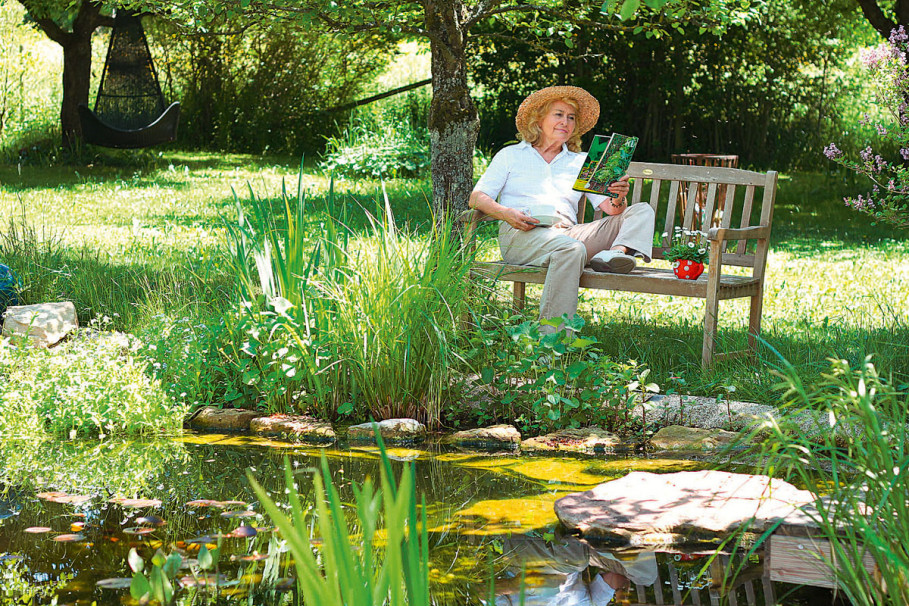Maintaining Your Pond and Garden with GRANDER
It’s time to winterize your pond
As fall and dropping temperatures paint meadows, forests, and your garden in a plethora of colors, the gardening year is approaching its close. Before you bid your garden pond farewell for the winter, many preparatory steps are required. Read on for a few tips to optimally prepare your pond for winter and protect pond equipment, fish, and plants against damage caused by ice and snow.
TIP 1: Remove deposits and weeds and cut back sprawling plants
Before it snows and your pond freezes over, it is important to remove leaves, foliage, branches, and dead aquatic plants floating in the water. The easiest way to do so is to use a landing net.
TIP 2: Cover your pond with a net
If you cover your pond with a net as soon as the first leaves turn color, you will save yourself a lot of pond cleaning work the coming spring.
Keep in mind: If leaves are left to rot in the water, nutrients are produced that tip the biological balance of your pond’s water. As a result, algae will proliferate.
TIP 3: Ensure that plants cover 50% of the water’s surface at most
A pond with a balanced mix of plants is well protected from excess algae growth. Some types of aquatic plants, such as hornwort, water milfoil, pond weed, and elodea, use up a large amount of nutrients, in effect starving algae growth. Water lilies, frogbit, floating heart, and other floating-leaved plants keep the sunlight from reaching algae. For this reason, it is advisable to aim for a plant coverage of your pond’s water surface of up to 50%.
TIP 4: Store delicate aquatic plants inside for the winter
Remove all plants except for hardy plants from the pond and store them at a sheltered space (house, greenhouse) over the winter. Non-tropical, hardy floating-leaved plants can be protected from freezing by moving them to a deeper spot in your pond (aim for a depth of about 100 cm). Only leave hardy, evergreen garden plants in your pond.
TIP 5: Remove pond instruments from the water and clean them before storing them in a safe place
It is best to disassemble pumps and store them in water enriched with a protective liquid.Important: Never store pond pump in a dry place.
Keep in mind: Never store a pump in a dry place.
Filter components must be removed, cleaned, and stored in a dry, frost-protected place. Underwater lamps and spotlights located around the pond also need to be dismounted and stored in a dry and frost-protected location.
TIP 6: Ensure that your pond never completely freezes over
If you are keeping koi in your fish pond, you must not only keep your pond water very stable but also heat it. Koi also need a hole in the ice surface to breathe.
TIP 7: Protect GRANDER Inline Units from freezing
Enjoy fall and the gardening it brings!

